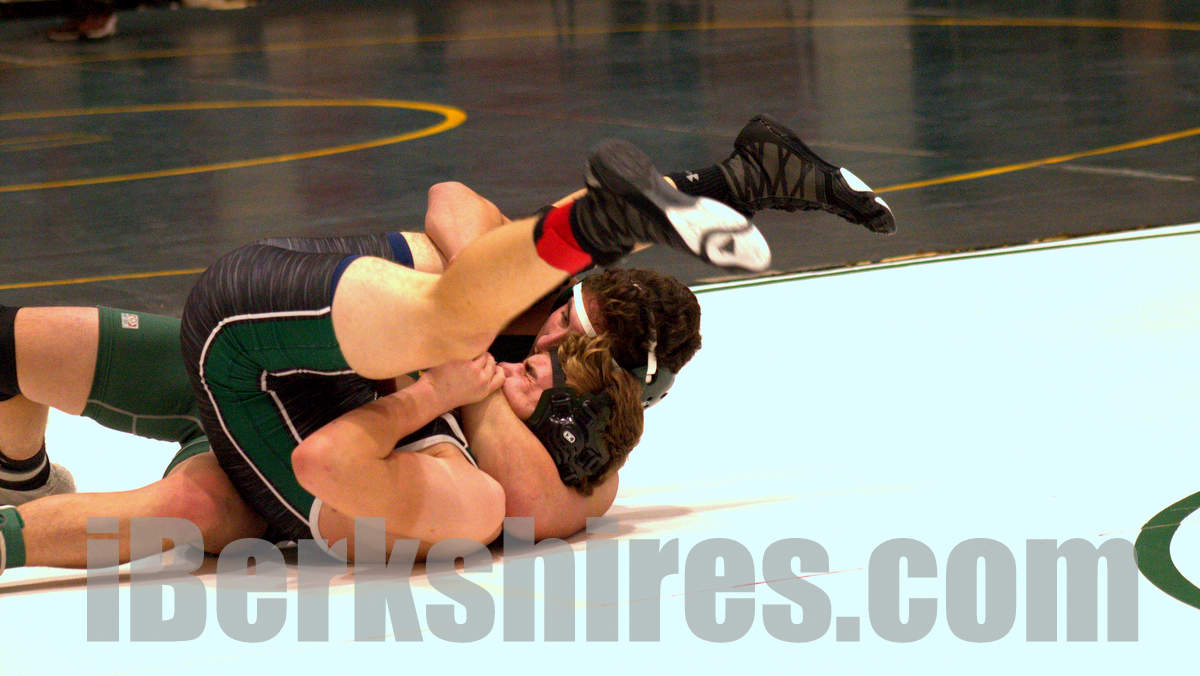State Guidelines Won't Allow Wrestling, Cheer Competitions for 2020-21 Season
 BOSTON -- High school wrestling and competitive cheerleading competitions will not be allowed this winter under the guidance released by the Executive Office of Energy and Environmental Affairs.
BOSTON -- High school wrestling and competitive cheerleading competitions will not be allowed this winter under the guidance released by the Executive Office of Energy and Environmental Affairs.
The EOEEA orders, effective Saturday, categorize both those winter sports as “higher risk” sports for COVID-19 transmission that are performed indoors and require sustained high contact.
As such, they only would be allowed to conduct practices if offered by Massachusetts high schools in 2020-21.
Basketball and ice hockey, also “higher risk” sports on the EOEEA matrix, “require intermittent close proximity and moderate contact” and, therefore, would be allowed both practices and competitions, though not not tournament or “jamboree” play, according to the state guidelines.
For Berkshire County high school hockey players, it is a hollow victory at best. The county’s three interscholastic hockey programs already canceled their seasons due to the potential of not being able to schedule games against teams in the Pioneer Valley.
All of the guidance released on Friday by the EOEEA now goes to the Massachusetts Interscholastic Athletic Association, whose sports committees will have five days to report to the association’s Sports Medicine Committee. The Sports Medicine Committee reports go to the MIAA COVID-19 Task Force, which will make recommendations to the full Board of Directors later this month.
Whatever the MIAA decides, it cannot be more permissive than the EOEEA, which has the authority to issue “Sector-Specific Rules” to implement safety measures in youth and amateur sports.
“To provide more clarity for K-12 school sport organizers, the following guidelines will apply for the remainder of the 2020-21 school year, unless public health conditions warrant any necessary updates,” the first page of the 14-page EOEEA document reads.
Two high school winter sports, alpine and nordic skiing, are categorized as “lower risk” sports because they “can be done with social distancing and no physical contact” or can be done individually.
Team swimming falls in the “moderate risk” category on the EOEEA scale, meaning that it is among the sports that “involve intermittent close proximity or limited, incidental contact between participants.”
But that does not automatically mean a total green light for swimming dual meets in the Berkshire County League, which includes a team from Vermont (Mount Anthony Union) and three from New York (Hudson, Taconic Hills and New Lebanon-Berlin).
“Facility operators may allow only Massachusetts-based teams and Massachusetts-based participants of moderate risk and high-risk sports to participate in Massachusetts-based Sport Events held at Massachusetts sports facilities,” the EOEEA guidelines read.
In other words, no Massachusetts school (or the Boys and Girls Club or YMCA) could host a New York team for a swimming competition.
As for Massachusetts teams traveling to New York or Vermont, “Any Massachusetts-based athlete that chooses to leave the state to participate in a Sport Event must comply with the Commonwealth’s Travel Rule before returning to work, school or attending public events.”
As of Friday, both Vermont and New York are categorized by Massachusetts as “lower-risk states” that do not require a 14-day quarantine for those returning from out-of-state travel. But that could change.
All sports will need to follow enhanced cleaning protocols at their venues and gymnasiums for practice and competitions, and athletes will be required to wear facial coverings during play, with exceptions for swimmers while in the water or athletes with a “documented medical condition or disability that makes them unable to wear a face coverings.”
The face covering requirement also will apply to coaches, officials and spectators, according to the guidelines.
Those spectators also will need to observe 6-foot social distancing requirements and will be limited in numbers at indoor venues. The total number of people in an indoor facility, including players, coaches, referees, staff and spectators cannot exceed 50 percent of the maximum occupancy for said venue, according to the EOEEA guidelines.
